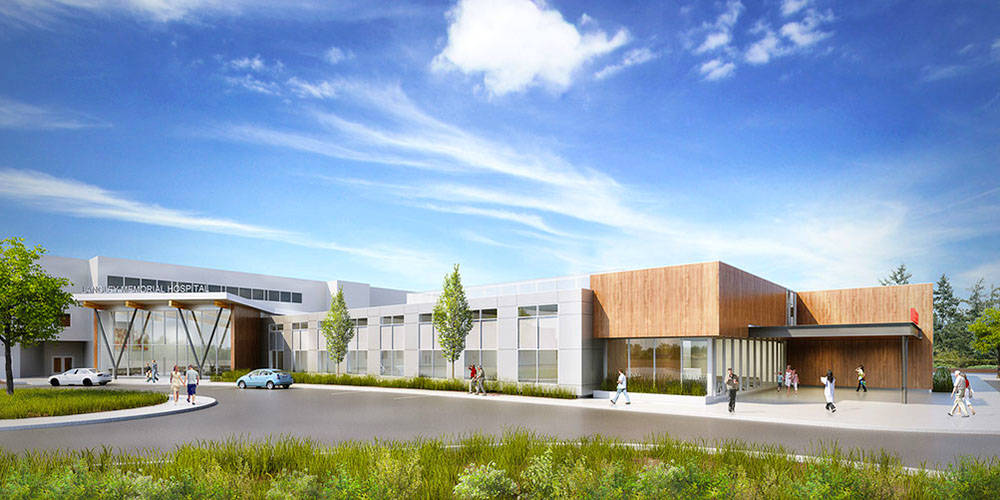Langley Memorial Hospital Auxiliary: Apparently small story packs huge punch
When Langley Memorial Hospital opened in 1948, it was, essentially, a country hospital.
Langley was a small town, dwarfed by Vancouver and its neighbouring communities.
No one could have seen its exploding population coming.
Seventy years later, the hospital announced that it would build a new emergency department. The Langley Memorial Hospital Foundation launched a multi-million-dollar fundraising campaign in May, and enlisted Peak’s help.
It’s been an outstanding project. The new emerg is needed, badly. The current facility is too small, too cramped, awkwardly designed and, as you can imagine, isn’t capable of handing the new Langley. We were able to draw attention to this critical undertaking, and felt we served a small but important role in the campaign launch.
At the initial news event, two big donors were announced. One family gave $2 million, and then a $5-million donor was unveiled. The assembled guests were wowed. Even the usually skeptical media was impressed – and we were able to attract media that wouldn’t normally be interested in a regional hospital.
Six weeks after the launch, we were at it again. The foundation was set to name its latest donor – the Langley Memorial Hospital Auxiliary. What could we do with that?
This is where effort needs to fight perception. After all, at a glance, we had a vision of what a hospital auxiliary is. They’re those blue-haired ladies, right? The ones who give you directions when you arrive at a hospital, who run the gift shop that has all the stuffies and balloons. Don’t they wear frocks? I think they wear frocks.
What sort of story is this?
Turns out, one heck of a story. Over the course of a quarter-century, Langley’s auxiliary has given about $10 million to the hospital. They have a wildly successful thrift store in town, and they’re a beast of an organization, with more than 200 volunteers and a highly committed base whose roots go back at least a century, to volunteer organizations that preceded the hospital.
At first, we didn’t think a $1.5-million donation would grab much attention when we’d already announced $7 million in one fell swoop. We certainly didn’t think media would be very interested in telling the story of the auxiliary.
Like I said, it turned to be a heck of a story. We met Diane Thornton, the longtime past-president. And Thelma Boileau, the current president. Thelma and Diane. Thelma and Diane. Hmmmm, sounds almost familiar. A couple of driven, independent women.
And when I spoke to Diane, this was the first thing she told me: “We have changed. We’re no longer a bunch of little old ladies knitting toilet roll covers. We’ve come a long way.”
That sure made the pitch a whole lot easier. This isn’t the auxiliary you’ve got in your head, we said. This is a serious kick-ass bunch, who know what they want and get it. Who wouldn’t want to tell that story?
That’s exactly what happened. CBC and CKNW. The Province. Pretty much every TV station in town. All telling the story about this powerful, motivated, altruistic group.
And so, the simplest of reminders: Don’t judge a book by its cover. Or, uh, its toilet roll cover.

